
In understanding the storming of the capitol one year ago today I’d like to focus on the framework of the “armed flash mob,” a term used by scholar Darrell Miller that connects with concepts introduced to me by Bill Wasik, an article in Wired magazine 10 years ago. I’m also drawing on the 40 minute NY Times’ documentary Day of Rage: How Trump Supporters Took the U.S. Capitol (published June 30, 2021) that offers minute by minute analysis of January 6, 2021 drawn from thousands of primary sources including a lot of video from the rioters themselves.
I’ll look at each term in the phrase “armed flash mob” in detail in the context of that day.
Mob – Insurrectionist crowd dynamics
We’ll begin by understanding how the insurrectionists on January 6 functioned in ways familiar to scholars of mob behavior. One of the key moments in the storming of the capitol happened at 12:50 pm. “Day of Rage” covers this moment in detail starting at about 10:00 in the video. They emphasize the role of the Proud Boys leader Joe Biggs and his brief conversation with Ryan Samsel, a Trump supporter who was the first to approach the police and challenge them. While leaders like this played an important role, it is important to understand the broader context of the crowd dynamics (both in this moment and as things escalted) to violently attack police. (more…)
TimN
January 6, 2022
Journalism, Polarization, Police, Power, Social Media, Social movements, Technology, Violence
Read more >
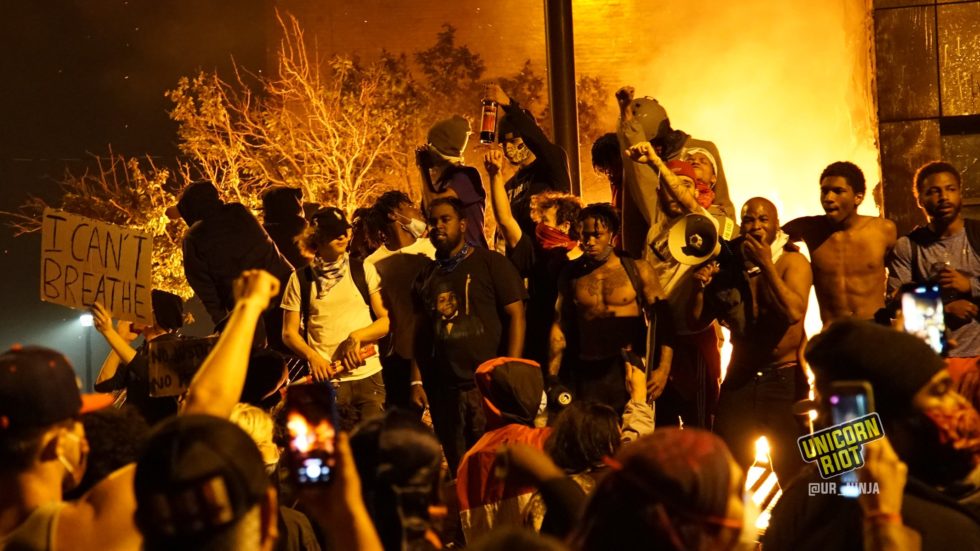
This post was co-written by Tim Nafziger and Mark van Steenwyk in 2017 (see original) in response to the backlash against anti-fascists actions in Charlottesville, Virginian in August 2017. We’re reposting it with a new title because it feels even more relevant today as we watch the white liberal response to the burning of the police precinct building in Minneapolis last night. If you’re not a pacifist, see what happens when you substitute the word “liberal” for “pacifist.” If you aren’t Mennonite, consider what our message might look like to your own community.
This is the second in a series of pieces we’ve co-written. This article builds on our first together in 2010: Oppression analysis on its own isn’t enough: Becoming an Ally
In the last two months, in the wake of the “Unite the Right” rally in Charlottesville, Virginia, we’ve read many white people in my Mennonite community and others committed to nonviolence reiterating their commitment to peace. In a recent article for Anabaptist historians, Tobin Miller-Sherer describes these “smug and satisfied declarations about the superiority of nonviolence” as “bumptious.” This is a good word because Mennonites are extremely skilled at being proud in a humble way.
Why? Let’s take a closer look.
White Mennonites are eager to love their Neo-Nazi enemies who showed up in Charlottesville on August 12, but Mennonite pastor Isaac Villegas calls us to be more honest about who their enemies are: (more…)
TimN
May 29, 2020
Nonviolence, Polarization, Police, Police Brutality, Politics
Read more >
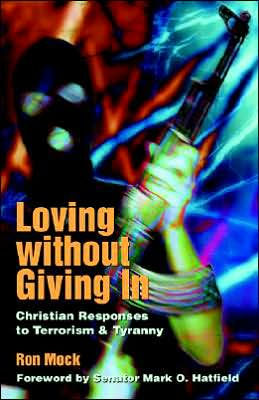
I originally published this review in with the Anabaptist Network in November of 2005 while working with them in London, England. I’ve been surprised how often the themes in this book have come back to me over the years and its one of the few books that made its way with me all the way from London to Chicago and then to Oak View.
Loving without Giving in: Christian Responses to Terrorism and Tyranny
Ron Mock (Telford: Cascadia Publishing House, 2004) £14.50
In the wake of the 7 July bombings and the response of the British Government, Christians in the United Kingdom would do well to consider this book. Ron Mock begins by working through five aspects of terrorism: violence, lawlessness, political motivation, targeting of civilians and operation through fear. In each area he looks at examples of terrorism that fall within his criteria and case studies that do not.
(more…)
TimN
February 8, 2018
Peace & Peacemaking, Polarization, Tactics, Terrorism, Uncategorized
Read more >
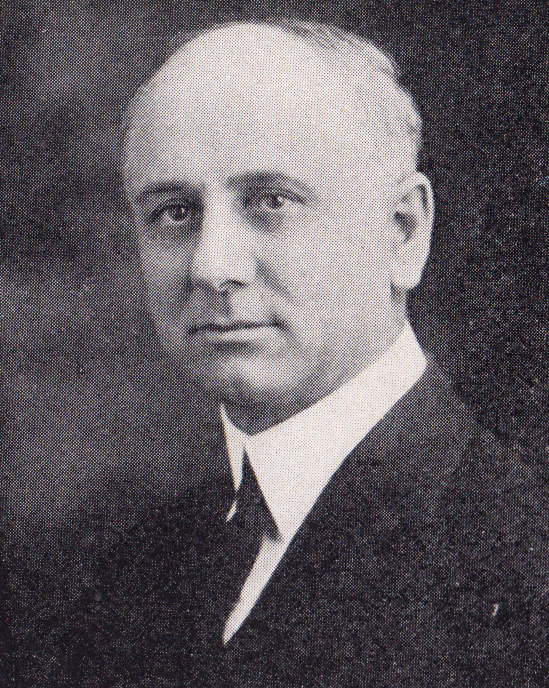
In his 1941 book, The Story of the Mennonites, historian C. Henry Smith describes the 1847 church conflict that led to a group of Mennonites leaving Franconia Conference to create Eastern Pennsylvania District of Mennonites. This new group eventually launched the General Conference Mennonite Church. In describing this schism among Mennonites, Smith observed a broader pattern:
It will be observed that the questions in dispute did not concern themselves with fundamental Mennonite doctrine. Mennonite quarrels never do. The new party did not differ from the old in its belief in adult baptism, non-resistance, opposition to the oath, rejection of secret societies, and for a time even in the retention of footwashing. The chief distinction lay rather in a more tolerant attitude of the “News,” as they were called by the “Olds,” toward the non-Mennonite world, both political and religious. (p. 602-603)
The “News,” led by John H. Oberholtzer, went on to adopt such radical innovations as Sunday School.
The roots of our ruptures
Why are Mennonites so prone to church divisions? (more…)
TimN
March 19, 2015
History, Mennonite Church USA, Polarization, Schism
Read more >
You may have seen news lately about different countries considering new harsher penalties for sodomy or whatever language they might choose. It’s happening in Russia, Uganda, Nigeria and Kenya and I’m sure many other places.
These days in the US many queer folk are tracking the lawsuits in each state that are striking down the same-sex marriage bans. It’s exciting for sure and I look forward to June of this year when all consenting adults will finally be able to marry here in Illinois.
In the midst of all this though I see news stories of a strong trend in the opposite direction in many other parts of the world. When I see a young man accused of homosexuality being tried and beaten to death in the streets by a vigilante mob I’m shocked! I never worry about this happening to me when I step outside my home in Chicago. While there are parts of this country I worry that I might be physically harmed for being gay I never expect to be put to death due to my sexuality.
The disturbing thing about these laws is that the consequence imposed by the government for breaking these laws is meaningless. The reality is that that people accused of homosexuality may never make it to court and if they do they may even be killed in the courtroom. This is how intense the homophobia is in some countries.
When I read the article about what happened in Nigeria my mind went certain places and I suspect that many people’s minds and hearts do the same. I think about how terrible these people are. I wonder how they can do these awful things. How does someone cultivate this kind of hatred and violence in their heart? Finally I become indignant! (more…)
benjaminjanderson
January 27, 2014
Bias, Death, Exclusion, Family, Hate, LGBTQ, Martyrdom, Peace & Peacemaking, Polarization, Power, Privilege, Race, Social justice, Violence
Read more >
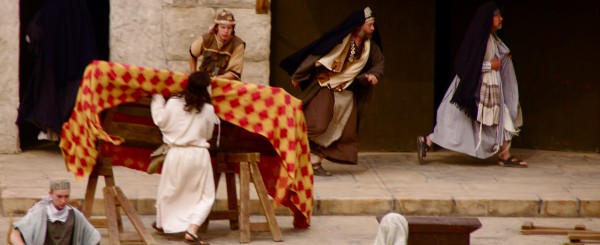
Oh how I wish Jesus had set a better example!
Let’s be reasonable here. He should have proposed his prophetic action in consultation with the religious leadership far in advance of the Passover feasts. This would have reduced so much stress for the Pharisees and scribes.
He shouldn’t have made his case using sacred scriptures. Too risky, too radical, too much playing his religion card like he knew it all. Why did he have to bring Isaiah or Jeremiah into this, crazy activists claiming God’s house for foreigners, eunuchs and the like! One issue at a time now! How dare he come to the temple with an agenda!
He certainly should have worked within the structures to ensure no one would be offended, no one would risk the chance at dialogue due to untimely, unvetted mention of certain outcasts. Didn’t he know that if you want to include these people, you have to exclude those people.
He should have toned it down at least a little, no name-calling nor blocking pedestrian traffic in the temple. And what’s with the whip of cords!?
Read more and get involved over at overturningtables.org!
CharlettaE
July 1, 2013
activism, Allyhood, Anabaptism, antiracism, Current Events, Exclusion, Gender, Group Identity, Immigration, Indigenous, LGBTQ, Mennonite Church USA, Peace & Peacemaking, Polarization, Power, Privilege, Race, Social justice, Spiritual Life
Read more >
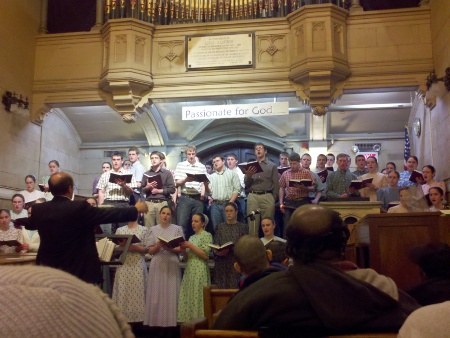
There’s a building boom on the Bowery these days. It’s been happening for a while, but the last couple years have witnessed an escalation in development, turning the neighborhood into a hip destination point.
Fifty years ago the Bowery was the largest skid row in the world. There were gin joints and flophouses on every block. That’s all gone now, thanks to the forces of gentrification. In their place are condos, art galleries and upscale eateries. Only one skid-row relic remains: the Bowery Mission.
Some of my earliest memories are of sitting behind the Mission’s pulpit in the 1960s, looking onto a sea of expectant faces while my father preached. In retrospect I realize the men behind those faces were awaiting the sermon’s conclusion so they could get their grub. (more…)
CharlieK
August 22, 2011
Anabaptism, Biographical, Change, Church, City, Civilization, Consumerism, culture, Current Events, Economics, Education, Ethics, Evangelism, Exclusion, God, Group Identity, History, Interfaith, Love, Mennonite Church USA, Mental health, Nonviolence, philosophy, Polarization, poverty, Power, Privilege, Race, Schism, Sex, Spiritual Life, Stewardship, Stories, The Bible, Theology, Tolerance, Tradition, Urban Ministry, Wealth
Read more >
Just read this article. I feel misunderstood; but in a way they do call us out on some stuff. It’s called “Mennonite Takeover?.” What do you think?
An excerpt:
All these neo-Anabaptists denounce traditional American Christianity for its supposed seduction by American civil religion and ostensible support for the “empire.” They reject and identify America with the reputed fatal accommodation between Christianity and the Roman Emperor Constantine capturing the Church as a supposed instrument of state power. Conservative Christians are neo-Anabaptists’ favorite targets for their alleged usurpation by Republican Party politics. But the neo-Anabaptists increasingly offer their own fairly aggressive politics aligned with the Democratic Party, in a way that should trouble traditional Mennonites. Although the neo-Anabaptists sort of subscribe to a tradition that rejects or, at most, passively abides state power, they now demand a greatly expanded and more coercive state commandeering health care, regulating the environment, and punishing wicked industries.
Even more strangely, though maybe unsurprisingly, mainstream religious liberals now echo the Anabaptist message, especially its pacifism. The Evangelical Left especially appreciates that the neo-Anabaptist claim to offer the very simple “politics of Jesus” appeals to young evangelicals disenchanted with old-style conservatives but reluctant to align directly with the Left. Most famously, Jim Wallis of Sojourners, once a clear-cut old style Religious Left activist who championed Students for a Democratic Society and Marxist liberationist movements like the Sandinistas, now speaks in neo-Anabaptist tones.
ST
November 14, 2010
activism, Anabaptism, Bias, Biographical, Blog, Change, Church, communication, Community, Conscientious Objection, culture, Current Events, Discipleship, Ethics, Evangelism, Group Identity, History, Mennonite Church USA, Nonviolence, Peace & Peacemaking, philosophy, Polarization, Polemics, Power, Theology, Tolerance, Tradition
Read more >
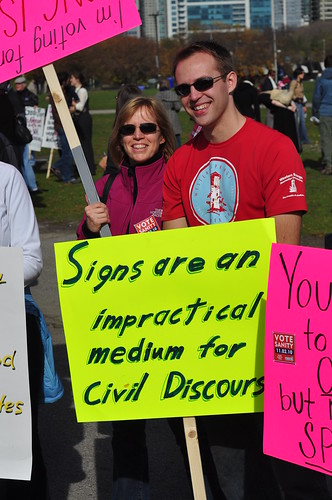
I just got back from the satellite Rally to Restory Sanity and/or Fear here in Chicago. I’ve been reading the confused articles leading up to the rally. Is it all about irony? Is it about moderation? Is it about progressive politics? Is this the millennial generation’s Woodstock?
After spending half an hour wondering around the edges of the rally here in Grant Park, it’s clear that those in attendance weren’t sure either. On the stage were Chicago progressive (trying their best to show enthusiasm and commitment to making a difference in challenging Chicago’s corrupt politics) competing with a Chicago comedians making jokes about sandwiches.
Alongside the stage was a muted jumbotron showing Comedy Central’s live coverage of the D.C. rally. The most unifying cry the crowd could get behind while I was there was shouting, “Audio! Audio!” when Jon Stewart came on screen. That’s right: They’d come to stand with thousands of other people in the middle of Grant Park on a beautiful October day so that they could all watch television together. And the funny thing is that they weren’t trying to be ironic.
 (more…)
(more…)
TimN
October 30, 2010
activism, culture, Fun, Group Identity, Polarization, Polemics, Reviews, Young Folks
Read more >
New Heaven, New Earth: Anarchism and Christianity Beyond Empire
August 14 & 15, 2009
Location
Caritas Village
2509 Harvard Avenue,
Memphis, TN 38112
This year’s anarchism and Christianity conference, hosted by Jesus Radicals, will look squarely at the economic and ecological crisis facing the globe, and point to signs of hope for creativity, for alternative living, for radical sharing, for faithfulness, for a new way of being. We are living in a karios moment that will either break us or compel us to finally strive for a new, sane way of life. The question we face at this pivotal time is not if our empires will fall apart, but when they will fall–and how will we face it? We hope you will join the conversation. (more…)
ST
June 25, 2009
activism, Anabaptism, Awesome Stuff, Change, Church, City, Civilization, Clothing, communication, Community, Conscientious Objection, Consumerism, Contemplation, culture, Current Events, Discipleship, Economics, Education, Emerging Church, End Times, Environment, Ethics, Evangelism, Faith, Family, Gender, Global Church, God, Group Identity, Healthcare, History, Immigration, Indigenous, Interfaith, International Relations, Leadership, liberation theology, Mental health, New Monasticism, Nonviolence, Peace & Peacemaking, philosophy, Polarization, Police, poverty, Power, Prayer, Privilege, Race, Roman Catholic, Spiritual Life, Stewardship, Stories, submergent, Television, The Bible, Theology, Tolerance, Tradition, Travel, Urban Ministry, war, Wealth, Writing, Young Folks
Read more >
It would be unfair to label Saint Sebastian’s Independant Catholic Church a “gay church”. But it’d be unfair not to mention that, perhaps, they are very into the gay happenings in Baltimore and minister to the gay community. While I am sure that Pastor Flaherty would be disheartened to think that Saint Sebastians is only a church for the queer community, the community at large would probably reference it as “The gay church”. I find this sort of thing unfortunate.
I wound up here by means of an Emergent Village book group that meets in Baltimore. I met Assisting Priest Joan Stiles, a bleached blonde short-haired middle aged woman, while discussing Claiborne’s book Jesus for President. The group discussed much and varied in theological belief tremendously. Disagreement’s abounded. Surprisingly, no one argued. I learned about Joan, her Catholic past, her current priesthood and thought, surely, if there was anyone I would disagree with it was female priest at a pro-gay church. But Joan, like much of the world, was full of surprises. I found myself captivated with her outlook on our faith, her impression of God, her passion for Biblical authority.
A few months later the Reverend Flaherty, the Priest at Joan’s church, even came to the emergent church meetup group. A tall man, who dwarfs me, with long fingers, he strikes me as the sort of person who is easy to get along with. Perhaps that same young idealism that runs in all young people’s blood still runs in his. I found him quiet, questioning, firm in his convictions yet willing to hear others out. It’s hard to not like him. (more…)
somasoul
November 30, 2008
Anabaptism, Bigotry, City, Dumb Stuff., Emerging Church, LGBTQ, Polarization, Race, Tolerance
Read more >
This piece was originally published in the AMIGOS Update for Mennonite Church USA and Mennonite Church Canada for May (see their archive for more info about AMIGOS).
“To authentically respond to immigration,” according to the recent MCC US Immigration Listening Report, “whites must start by seeing immigrants as ‘us’ instead of ‘them.’ White communities and churches who until now have taken little action on behalf of immigrants, must start viewing newcomers as esteemed members of God’s family — just as deserving of justice and love as church friends and immediate family members.”
How do those of us then, who fall into this category, work toward a change in perspective? Could it be that we Mennonites of European descent have forgotten our own history? Perhaps in comparing current themes — government guidelines for immigration, stereotypes faced by recent immigrants, and the role of economic instability in causing people to leave their homes — to our own immigrant histories, the categories of “us” and “them” may become much less distinct. Although the family stories of long-time immigrants are not identical to what is happening today, our history connects us in striking ways with the stories of recent immigrants.
Therefore, as we engage the narratives of our past, first we move to Switzerland in the seventeenth century where government officials did their best to suppress the Swiss Mennonites through heavy fines, land seizure, the threat of capital punishment, and deportations. John Roth notes in Letters of the Amish Division, how a few decades later some Mennonites “defied the mandates and threats of the Swiss government and secretly returned to Switzerland to rejoin their families or to claim their possessions.” (more…)
Joanna
June 10, 2008
Bigotry, History, Immigration, Polarization
Read more >
I don’t really like calling people names like “stupid” but the title was too much too resist. My apologies.
I was discussing the gentrification of Baltimore recently online. I understand concerns about urban gentrification and I partly agree with them. I can certainly understand wanting to keep neighborhoods in the hands of neighbors, not gianormous corporations and urban planning bureaucrats trying to utilize Eminent Domain to kick people out of their homes.
Part of our discussion centered, and others I’ve had, with the systematic racism of Baltimore in particular. It got me thinking about racism more, a topic which most of you know I could really care less about. (more…)
somasoul
May 13, 2008
activism, Bias, Bigotry, City, Dumb Stuff., Economics, Group Identity, Hate, Illegal, Immigration, Polarization, poverty, Privilege, Race
Read more >
Sigh. I’m exhausted from preparing for a mediation session tomorrow.
A white highly educated straight man new to the church community has remained apparently oblivious to racist and unkind remarks, gestures and communications that he has done in the last number of years. I spoke up about them after I’d been profoundly hurt. Now we are going to have a mediation session. I’m nervous about so many aspects of this conversation tomorrow. I was doing my homework, but I thought I’d write to YAR for encouragement since I can’t concentrate anyway.
I keep praying that I don’t get angry or try to make a point to make myself feel better/look better. Vengeance is not mine. I must entrust myself to the one who judges justly. But the balance is hard when I have to speak up for myself and for others who are still silent. I’m praying that no matter what happens, myself and others who have felt isolated and marginalized by his behavior will be able to move on and not let him control our lives at church. (more…)
ST
April 14, 2008
Church, Ethics, Fair, Faith, Mental health, Polarization, Privilege, Race, Stories, Young FolksAdd new tag
Read more >
*This article was originally posted on Christarchy.com. The “Ostrich-thing” makes more sense if you visit me there.*
Advocacy groups are dumb. There. I said it. You don’t have to agree with me, especially if you are part of an advocacy group. But someone had to say it and seeing as I’m the only one around here to take notice I had to speak up. (more…)
somasoul
March 13, 2008
activism, Awesome Stuff, culture, Current Events, Dumb Stuff., Ethics, History, Loyalty, Polarization, Politics, Uncategorized
Read more >







